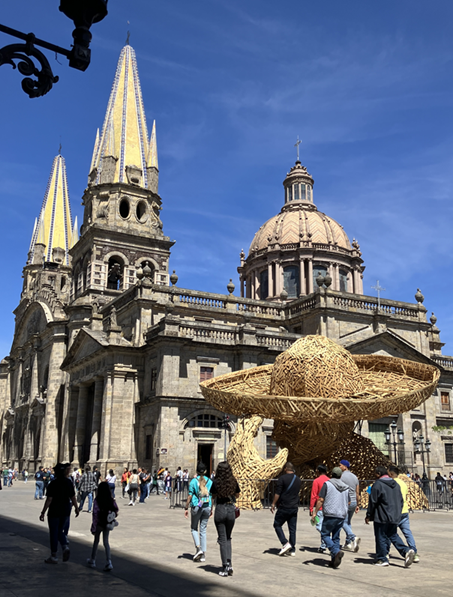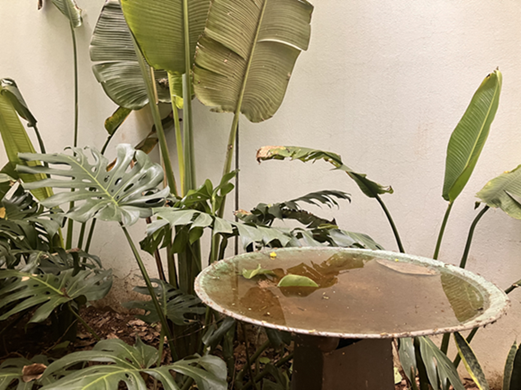As a foreign resident in Mexico, Dengue is the viral infection I fear getting the most. The good news is that so far in 2025, Dengue infections across Mexico are down from a year ago. At the same time, these infections are becoming more deadly. (more on that below)
If you’re new to living in Mexico, it’s important to know that you’re at risk of getting Dengue in nearly all states. Infection can happen at any time, though far more cases occur during the rainy season. (right now)
Because there’s no vaccine for Dengue for those who’ve never had it before, your best bet is to be proactive and avoid an infection.

Jalisco is Seeing a Surge in Dengue, Bucking the National Trend
In 2025 so far, confirmed cases in Mexico are down by more than half versus the same period a year ago. Even with the lower numbers this year, Dengue cases have been reported in 27 of 32 Mexican states, with the humid, low-lying coastal areas notable hotspots.
The worst outbreaks this year are in Jalisco and Veracruz. For the second year in a row, Jalisco is seeing the largest number of cases, with growth of 75%+ year-over-year. The state of Veracruz has moved into second place with respect to case volume, despite a large drop from 2024. The state of Guerrero is in third place.
Dengue Cases in Mexico in 2025

Tamaulipas, Sinaloa, and Guanajuato have also seen big increases in their infection rates this year, illustrating how widespread the risk of Dengue infection has become across Mexico.
As a side note, since Dengue can only be confirmed with a blood test, the government’s official case count grossly understates total infections. Last year, fewer than 1 in 5 probable Dengue cases were confirmed with a blood test. This is why I’ve chosen to show both probable and confirmed case counts in the table above.

The Death Rate for Dengue in Mexico is Up Significantly in 2025
Only about half of the people infected with Dengue in Mexico suffer serious symptoms. But for those who do, the death rate is up substantially over the past year.
The Mexican government calculates the death rate from symptomatic Dengue at roughly 0.9% in 2025, which is 3.5x higher than last year’s mortality rate.
If the death rate is calculated based on total confirmed cases (aka the case fatality rate or CFR), it’s 0.49% in 2025 as compared to 0.14% in 2024. This is 3.3x greater than a year ago!
When I first read the 2025 mortality rate, I thought… How can it spike that much in such a short time? There must be an error in the data. But there isn’t.
One explanation for the surge lies in the strain of the virus infecting people in Mexico. Some strains of Dengue are more virulent than others, and the kind that’s spreading in Mexico right now is the most virulent form. For the wonks out there, it’s serotype 2, or DENV-2.
This also explains why the percentage of severe Dengue cases in Mexico is higher than it is in many other countries. Based on data from Mexico’s Secretaria de Salud through late June 2025, the incidence of the most severe form of the virus, Dengue hemorrhagic fever (DHF), is up 18% year over year to about 4% of all cases in Mexico.
Common Dengue Symptoms To Watch Out For

How You Get Infected with Dengue Fever
Dengue is a viral infection endemic to tropical and subtropical regions that is transmitted to humans through mosquito bites. There is no human-to-human transmission of Dengue.
Worldwide, about 14 million people were infected with Dengue in 2024, roughly double the prior year’s total. The virus’s range is expanding massively as the planet warms.
There are 3,500 types of mosquitoes, but only three types infect people with Dengue, with the Aedes aegypti and Aedes albopictus being the most common.
It’s a mistake to think (like I once did) that most people get infected with Dengue in remote, jungle areas. Rapid urbanization and increased population density across Mexico have created conditions ideal for mosquito breeding and infection.
Cities where Dengue infections have become common include Merida, Veracruz, Acapulco, and Cancun.
Dengue infection rates spike during the rainy summer months, peaking between August and October most years. Record rains in 2025 have created the perfect conditions for Dengue to thrive and proliferate across Mexico.
Here in Guadalajara, we had five times more rainfall in June 2025 than in June last year, with flooding and standing water all over the place.
What the Mexican Government is Doing to Fight Dengue
Mosquito eradication efforts in Mexico are handled mostly at the state level, with uneven efforts likely responsible for the divergent trends in infection rates from state to state.
Despite Jalisco’s deteriorating situation, the Jalisco Health Secretariat has made multimillion-peso investments to combat the spread of Dengue. Their efforts include both fumigation and the release of genetically modified mosquitoes.
In heavily populated coastal areas of Jalisco, like Puerto Vallarta, the state is undertaking a fumigation campaign spanning 1,600 blocks. In our Zapopan neighborhood close to Centro Historico, we’ve seen local health officials doing assessments in recent months and sporadic spraying.
But I can tell you that it doesn’t seem to be enough. In the past year, both friends and neighbors of mine in Guadalajara have contracted Dengue. What’s more, the lack of road maintenance around this city creates many opportunities for mosquitoes to thrive.

Uneven roadways, plentiful potholes, flooded underpasses, and even sinkholes are a common sight around here, creating lots of opportunities for water to pool and mosquito colonies to expand.
Outside of Jalisco, there are active programs to combat Dengue in Veracruz, Tabasco, Guerrero, Michoacán, Chiapas, Oaxaca, and Baja California Sur.
Vaccines for Dengue Exist, But Not Everyone Can Take Them
While there are two vaccines on the market, only one is approved for use in Mexico: Dengvaxia, made by Sanofi Pasteur.
Those eligible to take Dengvaxia are people who have previously been infected with Dengue (and therefore risk a more serious case if re-infected), and between the ages of 16 and 45.
For everyone else, Dengue in Mexico is treated with pain medication like Paracetamol to alleviate symptoms, fluids, and plenty of rest.
If you are suffering from any of the symptoms shown in the graphic above, seek medical help immediately. If you get Dengue, its worst symptoms typically last a few days, with most recovering in 1-2 weeks.

The Best Ways to Protect Yourself from Dengue
As mentioned above, not all mosquitoes pose a risk. But since there aren’t any distinguishing characteristics for the kinds of mosquitoes that carry Dengue, the best way to protect yourself is to avoid being bitten by any mosquito.
Here are some additional steps you can take to avoid an infection:
- Wear long sleeves and long pants when visiting natural areas and applying repellent.
- Eliminate all standing water around your home.
- Put screens (mosquiteros) on all of your windows.
- Get the heck out of any place that’s infested with mosquitoes.
- Use an insect repellent with DEET when you go hiking or camping.
- Install a mosquito net around your bed for sleeping (especially if you don’t have window and door screens).
- Avoid natural settings in the evenings when mosquitoes are more active.
Dengue is especially dangerous for people with underlying conditions and anyone who’s been infected previously. If this describes you, be extra careful.
And finally, if you’re still exploring where to live in Mexico and have an underlying condition that might present complications if you were to contract Dengue, consider drier central and northern states, or a high elevation.
The risk in these areas is far lower. Notably, there have been no confirmed cases in CDMX, Zacatecas, Baja California, Chihuahua, or Tlaxcala so far in 2025.
Sources: Secretaria de Salud (Mexico), Pan American Health Organization, the World Mosquito Program, Yale University, and the CDC.

